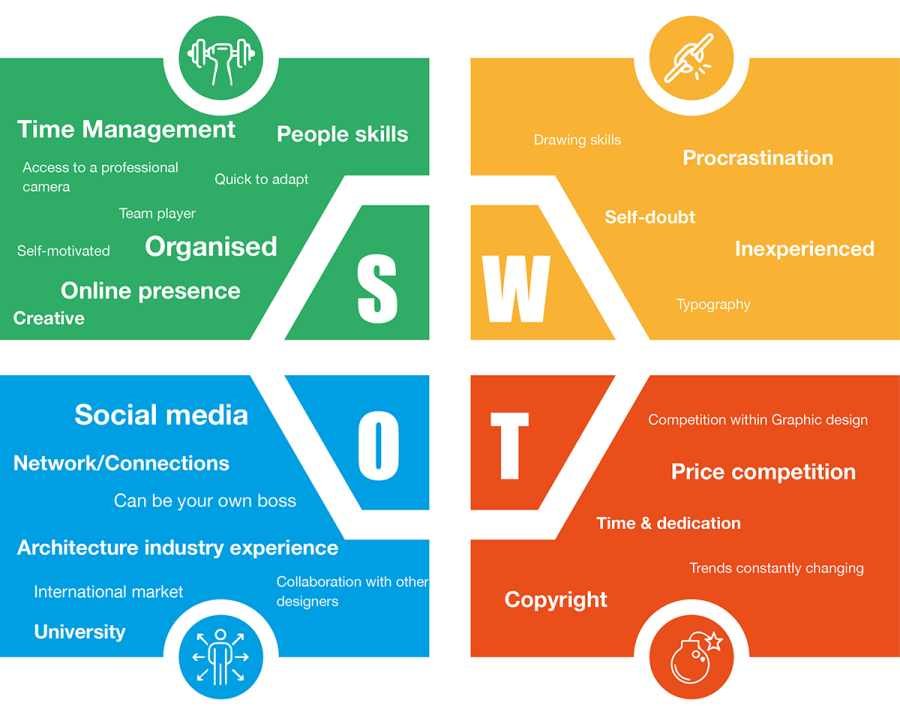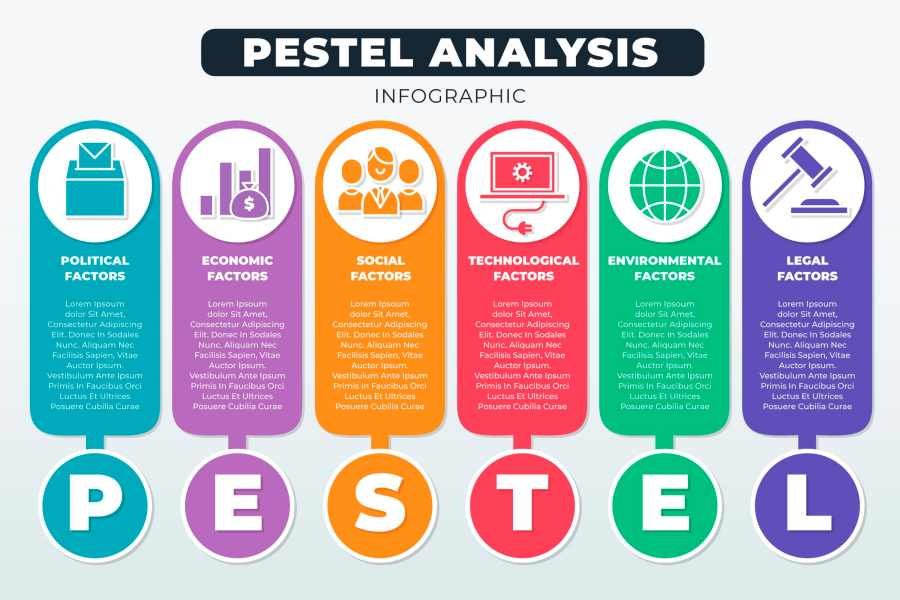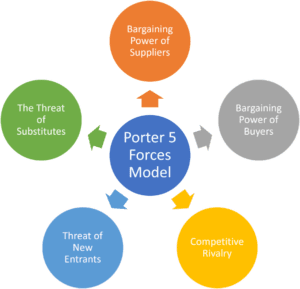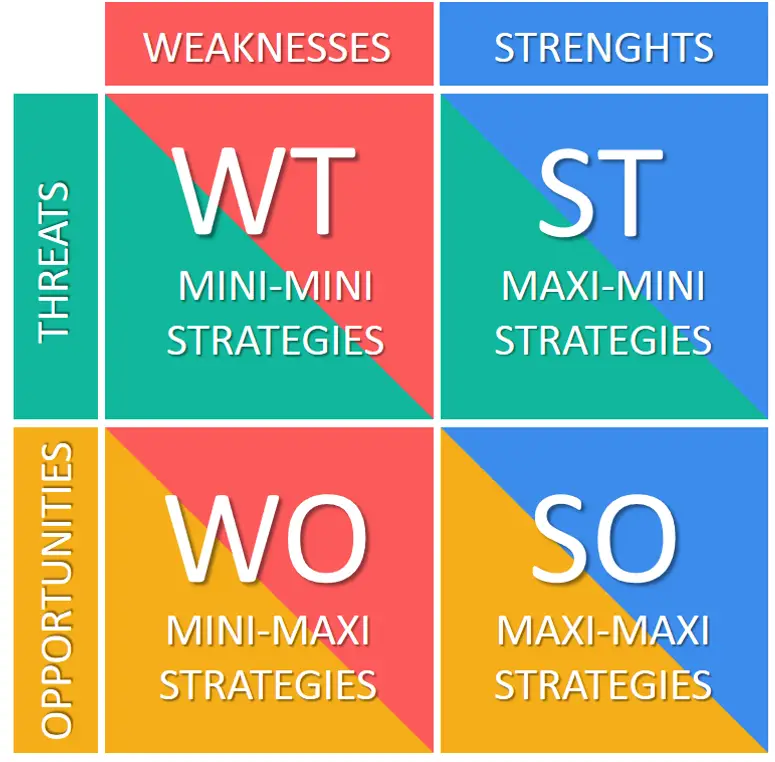Strategic Planning
Table of Contents
Strategic Planning: A Comprehensive Guide

Table of Contents
-
1. Executive Summary 1 2. Company Background 3 2.1 History of the Organization 3 2.2 Mission Statement 4 2.3 Core Values 4 2.4 Vision Statement 5 3. Environmental Analysis 6 3.1 SWOT Analysis 6 – Strengths 6 – Weaknesses 7 – Opportunities 8 – Threats 9 3.2 PESTEL Analysis 10 4. Competitor Analysis 12 4.1 Porter’s Five Forces Model 12 5. Market/Industry Trends 15 6. Key Strategic Issues 17 7. TOWS Matrix 18 8. Strategic Goals and Objectives 20 9. Strategic Initiatives and Action Plans 22 10. Resource Allocation 24 11. Risk Management and Mitigation 26 12. Monitoring and Evaluation 28 13. Implementation Timeline 30 14. Final Recommendations 15. References
32 33

1. Executive Summary [ Strategic Planning ]
The executive summary is a brief yet comprehensive overview of the organization’s strategic plan. It encapsulates the organization’s purpose, vision, critical strategic initiatives, objectives, and expected outcomes.
Critical Components of an Executive Summary
- Organization’s Purpose: This section outlines the organization’s purpose. For example, “EcoTech Solutions is dedicated to providing innovative and sustainable technology solutions that reduce environmental impact.”
- Vision Statement: This statement describes the organization’s long-term goals. For example, “Our vision is to become a leading provider of green technology solutions globally.”
- Critical Strategic Initiatives: These highlight the main strategies or projects that will be undertaken. For example, “Key initiatives include launching a new line of solar energy products.”
- Key Objectives: Summarize measurable goals using SMART criteria (Specific, Measurable, Achievable, Relevant, Time-bound).Example: “By the end of 2025, we aim to increase our market share by 20%.”
- Expected Outcomes: Outlines what success looks like for each initiative. For example, “Expected outcomes include enhanced brand reputation and increased revenue from new product lines.”
Importance of the Executive Summary in Strategic Planning
The executive summary is crucial for several reasons:
- Conciseness: Provides a streamlined overview for stakeholders.
- Clarity: Ensures everyone understands organizational goals.
- Engagement: Highlights exciting initiatives to encourage support.

Example of an Executive Summary
EcoTech Solutions is a forward-thinking organization dedicated to providing innovative and sustainable technology solutions that reduce environmental impact and promote energy efficiency. The organization empowers communities by offering eco-friendly products and services that enhance quality of life while safeguarding the planet for future generations. Its vision is to become a global leader in green technology solutions, inspiring individuals and organizations to adopt sustainable practices.
To realize this vision, EcoTech Solutions has identified several critical strategic initiatives that will guide its efforts over the next five years. These initiatives include launching a new line of solar energy products, expanding market reach through strategic partnerships, and investing in research and development to innovate eco-friendly technologies. Each initiative is designed to position EcoTech Solutions at the forefront of the green technology sector, enabling it to meet the increasing demand for sustainable solutions.
By the end of 2025, EcoTech Solutions aims to achieve specific, measurable objectives using SMART criteria. These objectives include increasing market share by 20%, reducing production costs by 15%, and earning a customer satisfaction rating of 90% or higher. Each objective is aligned with the organization’s overarching mission and will be monitored to ensure progress.
The expected outcomes from these initiatives are significant. EcoTech Solutions anticipates an enhanced brand reputation as a leader in sustainable technology, increased revenue from new product lines, and improved customer loyalty through exceptional service delivery. Success in these areas will benefit EcoTech Solutions and contribute positively to the communities it serves and the environment it aims to protect.
This executive summary provides a concise overview of EcoTech Solutions’ strategic plan, allowing stakeholders—including board members, investors, and employees—to grasp the essential elements of its strategy quickly. By aligning resources with these strategic priorities, EcoTech Solutions is well-positioned for growth while making a meaningful impact on sustainability efforts worldwide.

2. Company Background [ Strategic Planning ]
The company background section provides an overview of the organization’s history, mission, core values, and vision.
Critical Components of Company Background
- History of the Organization: Outlines origins and significant milestones.Example: “Founded in 2005, EcoTech Solutions began as a small startup focused on sustainable energy solutions.”
- Mission Statement: This defines the organization’s purpose. For example, “Our mission is to empower communities through innovative eco-friendly technology solutions.”
- Core Values: Fundamental beliefs guiding actions.Example:
- Sustainability: Commitment to environmentally responsible practices.
- Innovation: Encouraging creativity.
- Vision Statement: Articulates long-term aspirations. For example, “Our vision is to be recognized globally as a leader in sustainable technology.”
Importance of Company Background in Strategic Planning
Understanding the organization’s history, mission, core values, and vision provides essential context for strategic planning.

Sample of Company Background of EcoTech Solutions
History of the Organization:
Founded in 2010, EcoTech Solutions began as a small startup focused on developing sustainable energy solutions. The organization was established to address the growing concerns about climate change and environmental degradation. Over the years, EcoTech Solutions has achieved significant milestones, including launching its first solar panel product in 2012, which received accolades for innovation and efficiency. By 2015, the company expanded its offerings to include energy-efficient appliances and smart home technologies, solidifying its position as a leader in the green technology sector. Today, EcoTech Solutions is recognized for its commitment to sustainability and has received numerous awards for its contributions to environmental conservation.
Mission Statement:
EcoTech Solutions defines its purpose as empowering communities through innovative eco-friendly technology solutions. The organization aims to provide accessible and affordable products that promote sustainability and enhance the quality of life for individuals and families.
Core Values:
The core values of EcoTech Solutions guide its actions and decision-making processes. These values include:
- Sustainability: A commitment to environmentally responsible practices in all aspects of the business.
- Innovation: Encouraging creativity and embracing new ideas to drive progress in sustainable technology.
- Integrity: Upholding honesty and transparency in all interactions with stakeholders.
- Community Engagement: Actively participating in and supporting local communities to foster positive change.
Vision Statement:
EcoTech Solutions articulates its long-term aspirations through its vision statement: “Our vision is to be recognized globally as a leader in sustainable technology, inspiring change through innovation and community engagement.” This vision reflects the organization’s goal of leading the market and making a meaningful impact on global sustainability efforts.

3. Environmental Analysis [ Strategic Planning ]
The environmental analysis section provides insights into internal and external factors impacting the organization.
SWOT Analysis
- Strengths:Example: “Strong brand reputation for quality in sustainable technology.”
- Weaknesses:Example: “Limited marketing reach in emerging markets.”
- Opportunities:Example: “Growing demand for sustainable energy solutions.”
- Threats:Example: “Intense competition from established companies.”

Sample SWOT analysis for EcoTech Solutions
Strengths
- Strong Brand Reputation: EcoTech Solutions is recognized for its high-quality and reliable sustainable technology products.
- Innovative Technology: The company possesses proprietary technologies that enhance energy efficiency beyond industry standards.
- Skilled Workforce: EcoTech has a team of highly trained professionals with expertise in renewable energy and environmental science.
- Diverse Product Range: The organization offers many eco-friendly products, including solar panels, energy-efficient appliances, and smart home technologies.
- Established Partnerships: Strong relationships with government agencies and NGOs facilitate access to funding and collaborative projects.
Weaknesses
- Limited Marketing Reach: EcoTech Solutions has struggled to penetrate emerging markets effectively due to limited marketing efforts.
- Dependence on Key Suppliers: The organization relies heavily on several suppliers for critical components, creating potential supply chain vulnerabilities.
- High Production Costs: The cost of producing innovative technologies can be higher than competitors, affecting profit margins.
- Need for Employee Training: Enhanced training programs are continuously needed to keep employees updated on the latest technological advancements.
- Limited Brand Recognition in New Markets: While established in certain regions, EcoTech Solutions lacks brand recognition in new international markets.
Opportunities
- Growing Demand for Sustainable Solutions: Increasing awareness of climate change drives demand for eco-friendly products and technologies.
- Government Incentives: Potential partnerships with government agencies focused on green initiatives can provide project funding and support.
- Expansion into International Markets: There are opportunities to enter emerging markets where renewable energy is gaining traction.
- Technological Advancements: Innovations in renewable energy technologies present product development and differentiation opportunities.
- Corporate Social Responsibility (CSR) Trends: Corporations’ increasing emphasis on sustainability can lead to partnerships and new business opportunities.
Threats
- Intense Competition: The green technology sector is highly competitive, with numerous established companies and new entrants vying for market share.
- Regulatory Changes: Potential changes in environmental regulations may impose stricter compliance requirements that could increase operational costs.
- Economic Downturns: Economic fluctuations could reduce consumer spending on sustainable technologies, impacting sales.
- Supply Chain Disruptions: Global events or local disruptions may affect the availability of critical components and raw materials.
- Negative Public Perception: Any missteps in product quality or corporate responsibility could lead to negative publicity, damaging the brand’s reputation.

Strategic Planning
PESTEL Analysis
- Political Factors:Example: “Changes in government trade policies impacting tariffs.”
- Economic Factors:Example: “Rising inflation leading to increased costs.”
- Social Factors:Example: “An aging population increasing demand for healthcare products.”
- Technological Factors:Example: “The rise of e-commerce transforming retail strategies.”
- Legal Factors:Example: “Changes in labor laws affecting hiring practices.”
- Environmental Factors:Example: “Organizations needing to invest in greener technologies.”
Importance of Environmental Analysis in Strategic Planning
An environmental analysis is essential because it provides a comprehensive view of internal capabilities and external market conditions.

Sample PESTEL Analysis of EcoTech Solutions
A PESTEL analysis examines the external macro-environmental factors that can impact EcoTech Solutions, a company dedicated to providing sustainable technology solutions.
| PESTEL Factor | Description |
|---|---|
| Political | Government policies promoting renewable energy and sustainability initiatives benefit EcoTech Solutions. Regulatory incentives, such as tax credits for solar energy installations, enhance market opportunities. Political stability in key markets ensures a conducive environment for business operations. |
| Economic | Economic growth can lead to increased consumer spending on sustainable technologies. Fluctuations in raw material prices can impact production costs and profit margins, and economic downturns may reduce funding and consumer investments in eco-friendly products. |
| Social | Growing public awareness and concern about climate change drive demand for sustainable solutions. Consumers’ increasing preference for eco-friendly products influences purchasing decisions. Community engagement initiatives enhance brand loyalty and reputation. |
| Technological | Rapid advancements in renewable energy technologies create opportunities for innovation and product development. Increased adoption of smart home technologies aligns with EcoTech’s product offerings. Research and development investments are crucial to stay competitive in the evolving tech landscape. |
| Environmental | Heightened focus on environmental sustainability influences business practices and product offerings. Compliance with environmental regulations is essential to avoid penalties and maintain a positive public image. Climate change impacts may create new challenges and opportunities for sustainable solutions. |
| Legal | Compliance with local, national, and international regulations regarding environmental standards is critical. Intellectual property laws protect EcoTech’s innovations and proprietary technologies. Changes in labor laws may affect hiring practices and operational costs. |

4. Competitor Analysis [ Strategic Planning ]
Understanding the competitive landscape helps organizations identify advantages and disadvantages.
Porter’s Five Forces Model
- Rivalry Among Existing Competitors Example: “Numerous companies compete for market share in renewable energy.”
- Bargaining Power of Buyers Example: “Large retailers can negotiate better prices due to volume purchases.”
- Bargaining Power of Suppliers Example: “Limited suppliers for specialized parts give them leverage over manufacturers.”
- Threat of New Entrants Example: “High investment needed for brand recognition limits new entrants.”
- Threat of Substitute Products Example: “Healthier alternatives like flavored water threaten traditional beverages.”
Importance of Competitor Analysis in Strategic Planning
Understanding competitive dynamics enables organizations to identify areas where they have a competitive edge.


Sample of Competitor Analysis of EcoTech Solutions Using Porter’s Five Forces Model
The following table presents a competitor analysis for EcoTech Solutions, comparing it with two other competitors in the renewable energy sector: GreenTech Innovations and SolarWave Technologies. This analysis utilizes Porter’s Five Forces model to assess the competitive landscape.
| Force | EcoTech Solutions | GreenTech Innovations | SolarWave Technologies |
|---|---|---|---|
| Rivalry Among Existing Competitors | High; numerous companies compete for market share, leading to aggressive pricing and continuous innovation. | High; strong competition from various players in the green technology market drives constant improvements. | Moderate; while competition exists, SolarWave has carved a niche in solar panel technology. |
| Bargaining Power of Buyers | High; customers can easily switch to alternative providers, increasing their negotiating power. | Moderate; loyal customer base exists, but price sensitivity can influence buyer decisions. | High; consumers have many options, leading to significant bargaining power over pricing. |
| Bargaining Power of Suppliers | Low; multiple suppliers for raw materials reduce supplier power, allowing for competitive pricing. | Moderate; reliance on specific suppliers for certain components may give them leverage in negotiations. | Low; a diverse supplier base minimizes risks associated with supplier power. |
| Threat of New Entrants | Moderate; while brand loyalty exists, new entrants can penetrate the market with innovative solutions. | Low; high barriers to entry due to significant capital investment and regulatory requirements deter newcomers. | Moderate; unique product offerings create barriers, but the market’s attractiveness invites new entrants. |
| Threat of Substitute Products | High; numerous alternatives exist, including traditional energy sources and other renewable technologies. | Moderate; while substitutes are available, GreenTech’s unique offerings reduce direct competition impact. | High; various renewable energy options and traditional energy sources threaten market share. |
Summary of Competitor Analysis
This competitor analysis reveals that EcoTech Solutions operates in a highly competitive environment with significant rivalry among existing competitors and high bargaining power among buyers. While the threat of new entrants is moderate, numerous substitute products present a challenge for maintaining market share.GreenTech Innovations faces similar competitive pressures but benefits from a loyal customer base that can mitigate some price sensitivity. SolarWave Technologies has established itself within a niche market, which provides some insulation from direct competition but still contends with high buyer power and substitute threats. Understanding these dynamics allows EcoTech Solutions to strategically position itself by leveraging its strengths while addressing potential vulnerabilities in the competitive landscape.

5. Market/Industry Trends [ Strategic Planning ]
Analyzing current and emerging trends is crucial for adapting strategies effectively.
Critical Steps in Analyzing Trends
- Identify Key Trends
- Understand Market Dynamics
- Monitor Changes in Supply and Demand
- Stay Informed on Industry News
- Leverage Market Research Tools
- Gather Customer Feedback
- Predict Future Trends
Importance of Analyzing Market/Industry Trends in Strategic Planning
Identifying trends helps organizations discover new areas for growth.

Sample Market/Industry Trends for EcoTech Solutions
The renewable energy sector is experiencing dynamic changes that significantly impact companies like EcoTech Solutions. Key industry trends include the following:
- Increased Demand for Renewable Energy: The global push for sustainability has led to a marked increase in demand for renewable energy solutions. According to recent reports, the renewable energy market is projected to grow at a compound annual growth rate (CAGR) of 8% over the next five years (Smith, 2024). This trend is driven by heightened awareness of climate change and the need for sustainable alternatives.
- Technological Advancements: Rapid technological advancements are transforming the renewable energy landscape. Innovations in solar panel efficiency, energy storage solutions, and smart grid technologies are creating new opportunities for companies to enhance their product offerings (Johnson, 2024). EcoTech Solutions must invest in research and development to stay competitive in this evolving environment.
- Government Incentives: Many governments are implementing policies and incentives to promote renewable energy adoption. Programs such as tax credits for solar installations and grants for energy-efficient upgrades are becoming more common (Davis, 2024). EcoTech Solutions can leverage these incentives to expand its market reach and improve profitability.
- Consumer Preference for Sustainability: A growing consumer preference for eco-friendly products influences purchasing decisions across various sectors. Surveys indicate that over 70% of consumers are willing to pay more for sustainable products (Lee, 2024). This trend presents an opportunity for EcoTech Solutions to enhance its marketing strategies and product positioning.
- Focus on Energy Efficiency: As energy costs rise, consumers and businesses increasingly focus on energy efficiency. Products that offer significant savings on energy bills are in high demand (Martinez, 2024). EcoTech Solutions can capitalize on this trend by emphasizing the cost-saving benefits of its products in marketing campaigns.
- Supply Chain Challenges: The renewable energy sector faces disruptions due to geopolitical tensions and raw material shortages. Companies must adapt by diversifying their supplier base and exploring alternative materials (Nguyen, 2024). EcoTech Solutions should proactively manage its supply chain to mitigate risks associated with these challenges.
- Growing Interest in Smart Technologies: The integration of smart technologies into renewable energy systems is gaining traction. Consumers are increasingly interested in smart home solutions that optimize energy use and enhance convenience (Vito, 2024). EcoTech Solutions should consider expanding its product line to include smart technology features.

6. Key Strategic Issues [ Strategic Planning ]
Identifying key strategic issues is vital for focusing on critical challenges that impact long-term success.
Steps to Identify Key Strategic Issues
- Review Environmental Analysis.
- Engage Stakeholders.
- Prioritize Issues.
- Analyze Root Causes.
- Explore Opportunities.
- Develop Actionable Insights.

Sample Key Strategic Issues for EcoTech Solutions
EcoTech Solutions operates in a rapidly evolving renewable energy market, facing several strategic challenges and opportunities. Identifying these critical strategic issues is essential for the organization to align its resources and efforts effectively.
1. Market Penetration Challenges
EcoTech Solutions is struggling to expand its market presence, particularly in emerging markets with low brand recognition. This limits the company’s ability to capitalize on the growing demand for sustainable technologies.
2. Supply Chain Vulnerabilities
The organization relies on a limited number of suppliers for critical components, which poses risks to production continuity and cost management. Disruptions in the supply chain can lead to increased costs and delays in product delivery.
3. Technological Advancements
Rapid advancements in renewable energy technology necessitate continuous investment in research and development. EcoTech must innovate to keep pace with competitors and meet evolving customer demands for more efficient and sustainable solutions.
4. Regulatory Compliance
Navigating complex and evolving environmental regulations can be challenging for EcoTech Solutions. Non-compliance could result in penalties, increased operational costs, and damage to the company’s reputation.
5. Shifting Consumer Preferences
Consumer preferences are increasingly leaning toward more sustainable and innovative products. EcoTech must continuously adapt its offerings to meet these changing expectations, requiring ongoing market research and product development.
Steps to Identify Key Strategic Issues
Review Environmental Analysis
An environmental analysis, including PESTEL and SWOT assessments, reveals significant trends impacting EcoTech Solutions. Key findings indicate a growing demand for renewable energy solutions, regulatory challenges, and competitive dynamics that require immediate attention.
Engage Stakeholders
Involving key stakeholders—such as employees, customers, suppliers, and industry experts—provides valuable insights into EcoTech’s strategic issues. Feedback gathered through surveys and focus groups highlight concerns regarding supply chain reliability and market penetration strategies.
Prioritize Issues
After assessing the feedback and insights from the environmental analysis, EcoTech Solutions prioritizes the following issues based on their potential impact:
- Market penetration challenges
- Supply chain vulnerabilities
- Technological advancements
By focusing on these high-priority issues, EcoTech can allocate resources effectively to address them.
Root Causes
Understanding the root causes of prioritized issues is essential for effective problem-solving:
- Market Penetration Challenges: Low brand awareness in emerging markets stems from limited marketing efforts and lack of localized strategies.
- Supply Chain Vulnerabilities: Dependence on a few key suppliers creates price fluctuations and availability risks.
- Technological Advancements: Insufficient investment in R&D may hinder innovation efforts compared to competitors.
Opportunities
Identifying potential opportunities related to these strategic issues can help EcoTech Solutions enhance its competitive position:
- Market Penetration: Expanding partnerships with local distributors can improve brand visibility in new markets.
- Supply Chain Management: Diversifying suppliers can mitigate risks associated with reliance on a limited number of sources.
- Innovation: Investing in R&D can lead to developing cutting-edge technologies that meet emerging consumer needs.
Actionable Insights
Formulating strategies based on identified opportunities will enable EcoTech Solutions to address key strategic issues effectively:
- Increase Marketing Efforts: Implement targeted marketing campaigns to boost brand awareness in emerging markets.
- Strengthen Supplier Relationships: Establish relationships with multiple suppliers to create a more resilient supply chain.
- Enhance R&D Investment: Allocate resources toward research initiatives that develop innovative products aligned with market trends.

7. TOWS Matrix [ Strategic Planning ]
The TOWS Matrix helps organizations analyze potential combinations of strengths, weaknesses, opportunities, and threats to identify strategic options.
Definition and Purpose
The TOWS Matrix allows organizations to develop actionable strategies by correlating internal strengths with external opportunities.

Sample TOWS Matrix for EcoTech Solutions
The TOWS Matrix is a strategic tool that helps organizations develop actionable strategies by correlating their internal strengths and weaknesses with external opportunities and threats. Below is the TOWS Matrix for EcoTech Solutions, utilizing the information from the SWOT analysis.
| TOWS Matrix | Opportunities | Threats |
|---|---|---|
| Strengths | SO Strategies (Using Strengths to take advantage of Opportunities) | ST Strategies (Using Strengths to mitigate Threats) |
| 1. Strong Brand Reputation | 1. Leverage brand reputation to market new eco-friendly products in emerging markets where demand is growing (S1, O1). | 1. Use established partnerships with government agencies to navigate regulatory changes effectively (S5, T2). |
| 2. Innovative Technology | 2. Develop new products that align with government incentives for renewable energy technologies (S2, O2). | 2. Utilize proprietary technology to maintain competitive advantage amid intense competition (S2, T1). |
| 3. Skilled Workforce | 3. Train staff on the latest technological advancements to enhance product development (S3, O4). | 3. Leverage skilled workforce to quickly adapt to supply chain disruptions and maintain operational efficiency (S3, T4). |
| Weaknesses | WO Strategies (Overcoming Weaknesses by leveraging Opportunities) | WT Strategies (Minimizing Weaknesses to avoid Threats) |
| 1. Limited Marketing Reach | 1. Increase marketing efforts in collaboration with local distributors in emerging markets to improve brand recognition (W1, O3). | 1. Diversify supplier base to reduce dependence on key suppliers and mitigate supply chain vulnerabilities (W2, T4). |
| 2. High Production Costs | 2. Seek government grants or incentives to offset high production costs associated with innovative technologies (W3, O2). | 2. Implement cost-reduction strategies to enhance profit margins amid economic downturns (W3, T3). |
| 3. Limited Brand Recognition in New Markets | 3. Partner with local NGOs for community engagement initiatives to build brand awareness in new markets (W5, O1). | 3. Enhance employee training programs to improve adaptability and responsiveness to negative public perception (W4, T5). |
Explanation of the TOWS Matrix
- SO Strategies: These strategies leverage EcoTech’s strengths to capitalize on external opportunities. For example, the company can effectively penetrate emerging markets by using its strong brand reputation and innovative technology.
- ST Strategies: These strategies utilize EcoTech’s strengths to mitigate potential threats. EcoTech can navigate regulatory challenges and maintain a competitive edge by leveraging established partnerships and proprietary technology.
- WO strategies focus on overcoming weaknesses by taking advantage of opportunities. For instance, increasing marketing efforts in collaboration with local distributors can help address limited marketing reach.
- WT Strategies: These strategies aim to minimize weaknesses while avoiding threats. Diversifying the supplier base can reduce dependency risks and enhance resilience against supply chain disruptions.

8. Strategic Goals and Objectives [ Strategic Planning ]
Strategic goals are broad aims that align with the organization’s mission; objectives are specific steps to achieve these goals.

Sample Strategic Goals and Objectives for EcoTech Solutions
EcoTech Solutions aims to leverage its strengths and address its strategic issues by setting clear, measurable goals and objectives. These strategic goals will guide the company in achieving its mission of providing innovative and sustainable technology solutions while enhancing its market position.
Strategic Goals
- Increase Market Share
- Objective: Achieve a 20% increase in market share in emerging markets by the end of 2025.
- Rationale: This goal addresses the challenge of limited marketing reach (W1) and capitalizes on the growing demand for sustainable solutions (O1).
- Enhance Brand Recognition
- Objective: Improve brand recognition in new international markets by 30% within two years through targeted marketing campaigns and partnerships with local NGOs.
- Rationale: This goal aims to overcome limited brand recognition (W5) while leveraging opportunities for corporate social responsibility (O5).
- Reduce Production Costs
- Objective: Decrease production costs by 15% over the next three years through process optimization and supplier diversification.
- Rationale: This goal addresses high production costs (W3) and aims to improve profit margins amid economic fluctuations (T3).
- Invest in Research and Development
- Objective: Allocate 10% of annual revenue to research and development initiatives focused on innovative renewable energy technologies by 2025.
- Rationale: This goal supports the need for continuous technological advancement (W4) while capitalizing on technological advancements (O4).
- Achieve High Customer Satisfaction
- Objective: Attain a 90% or higher customer satisfaction rating by the end of 2025 through enhanced service delivery and product quality.
- Rationale: This goal aligns with the organization’s commitment to quality and reliability, addressing potential negative public perception (T5).
Expected Outcomes
- Increased Revenue: Achieving these strategic goals is expected to increase revenue from new product lines and improve market positioning.
- Enhanced Brand Reputation: Improved brand recognition will enhance EcoTech’s reputation as a leader in sustainable technology.
- Operational Efficiency: Reducing production costs will increase profitability, allowing for reinvestment in innovation and growth.
- Customer Loyalty: High customer satisfaction ratings will foster loyalty, leading to repeat business and referrals.

Strategic Planning
9. Strategic Initiatives and Action Plans
Strategic initiatives are specific projects supporting goals; action plans outline necessary steps.

Sample of Strategic Initiatives and Action Plans for EcoTech Solutions
To achieve its strategic goals and objectives, EcoTech Solutions will implement several key initiatives supported by detailed action plans. These initiatives are designed to address the identified strategic issues and leverage opportunities in the renewable energy market.
1. Market Expansion Initiative
- Objective: Increase market share in emerging markets by 20% by the end of 2025.
- Action Plan:
- Conduct Market Research: Identify target regions with high demand for sustainable solutions (Q1 2024).
- Develop Local Partnerships: Collaborate with local distributors and NGOs to enhance brand visibility (Q2 2024).
- Launch Targeted Marketing Campaigns: Implement marketing strategies tailored to local cultures and preferences (Q3 2024).
- Monitor Progress: Evaluate market penetration quarterly and adjust strategies as needed (Ongoing).
2. Supply Chain Diversification Initiative
- Objective: Reduce dependence on key suppliers by diversifying the supplier base by 30% within two years.
- Action Plan:
- Identify Alternative Suppliers: Research and vet potential suppliers for critical components (Q1 2024).
- Negotiate Contracts: Establish agreements with multiple suppliers to ensure competitive pricing and availability (Q2 2024).
- Implement Risk Management Strategies: Develop contingency plans to address potential supply chain disruptions (Q3 2024).
- Evaluate Supplier Performance: Conduct annual reviews of supplier performance and reliability (Ongoing).
3. Research and Development Investment Initiative
- Objective: Allocate 10% of annual revenue to R&D for innovative renewable energy technologies by 2025.
- Action Plan:
- Set R&D Priorities: Identify key areas for innovation based on market trends and consumer feedback (Q1 2024).
- Recruit R&D Talent: Hire additional skilled professionals to enhance the R&D team (Q2 2024).
- Collaborate with Research Institutions: Partner with universities and research organizations for joint projects (Q3 2024).
- Monitor R&D Outcomes: Track progress on new product developments and their market impact (Ongoing).
4. Customer Satisfaction Enhancement Initiative
- Objective: Achieve a customer satisfaction rating of 90% or higher by the end of 2025.
- Action Plan:
- Conduct Customer Surveys: Gather feedback on product quality, service, and overall satisfaction (Q1 2024).
- Implement Training Programs: Enhance employee training focused on customer service excellence (Q2 2024).
- Develop Feedback Mechanisms: Create channels for continuous customer feedback through social media and direct communication (Q3 2024).
- Evaluate Customer Satisfaction Metrics: Analyze survey results quarterly to identify areas for improvement (Ongoing).
5. Cost Reduction Initiative
- Objective: Reduce production costs by 15% over the next three years.
- Action Plan:
- Analyze Production Processes: Conduct a thorough review of current production methods to identify inefficiencies (Q1 2024).
- Invest in Automation Technologies: Explore automation solutions that can streamline production processes (Q2 2024).
- Negotiate Bulk Purchase Agreements: Work with suppliers to secure better pricing on raw materials through bulk purchasing (Q3 2024).
- Monitor Cost Savings: Track cost reduction progress quarterly and adjust strategies as necessary (Ongoing).
Expected Outcomes
- Increased market share and brand recognition in emerging markets.
- A more resilient supply chain with reduced risks associated with supplier dependency.
- Enhanced innovation through dedicated R&D efforts leading to new product offerings.
- Higher customer satisfaction, resulting in increased loyalty and repeat business.
- Improved profit margins through effective cost reduction strategies.
By implementing these strategic initiatives, EcoTech Solutions aims to strengthen its position in the renewable energy sector, effectively address key strategic issues, and capitalize on emerging opportunities.

10. Resource Allocation [ Strategic Planning ]
Resource allocation involves distributing financial, human, and technological resources effectively.

Sample Resource Allocation for EcoTech Solutions
Effective resource allocation is crucial for EcoTech Solutions to achieve its strategic goals and objectives. This allocation will focus on key areas such as marketing, research and development (R&D), supply chain management, customer service, and employee training. Below is a detailed resource allocation plan.
1. Marketing Budget
- Total Allocation: 25% of annual budget
- Purpose: To increase brand recognition and market share, particularly in emerging markets.
- Action Items:
- Develop targeted marketing campaigns in new regions.
- Collaborate with local distributors and NGOs for community engagement.
- Utilize digital marketing strategies to enhance online presence.
2. Research and Development (R&D)
- Total Allocation: 10% of annual revenue
- Purpose: To innovate and enhance product offerings in line with technological advancements.
- Action Items:
- Invest in new technologies that improve energy efficiency.
- Recruit additional skilled professionals for the R&D team.
- Partner with universities and research institutions for collaborative projects.
3. Supply Chain Management
- Total Allocation: 15% of annual budget
- Purpose: To diversify suppliers and strengthen supply chain resilience.
- Action Items:
- Identify and negotiate contracts with alternative suppliers.
- Implement risk management strategies to mitigate supply chain disruptions.
- Monitor supplier performance regularly to ensure reliability.
4. Customer Service Enhancement
- Total Allocation: 20% of annual budget
- Purpose: To achieve a customer satisfaction rating of 90% or higher.
- Action Items:
- Conduct regular customer surveys to gather feedback on products and services.
- Enhance employee training programs focused on customer service excellence.
- Develop robust feedback mechanisms through social media and direct communication.
5. Employee Training and Development
- Total Allocation: 10% of annual budget
- Purpose: To ensure employees are up-to-date with the latest technological advancements.
- Action Items:
- Implement continuous training programs that focus on emerging technologies in renewable energy.
- Offer workshops and seminars led by industry experts.
- Encourage professional development through courses and certifications.
6. Operational Efficiency Improvements
- Total Allocation: 20% of annual budget
- Purpose: To reduce production costs by 15% over the next three years.
- Action Items:
- Analyze current production processes to identify inefficiencies.
- Invest in automation technologies to streamline operations.
- Negotiate bulk purchase agreements with suppliers for cost savings.
Summary of Resource Allocation
| Resource Area | Percentage of Annual Budget/Revenue | Purpose |
|---|---|---|
| Marketing Budget | 25% | Increase brand recognition and market share |
| Research and Development (R&D) | 10% of annual revenue | Innovate and enhance product offerings |
| Supply Chain Management | 15% | Diversify suppliers and strengthen supply chain resilience |
| Customer Service Enhancement | 20% | Achieve high customer satisfaction |
| Employee Training and Development | 10% | Keep employees updated on technological advancements |
| Operational Efficiency Improvements | 20% | Reduce production costs |
By strategically allocating resources across these key areas, EcoTech Solutions can effectively pursue its strategic initiatives, address critical challenges, and capitalize on emerging opportunities within the renewable energy sector. This approach will enable the company to enhance its competitive position while ensuring long-term sustainability.

11. Risk Management and Mitigation [ Strategic Planning ]
This involves identifying potential risks that could hinder achieving objectives and developing strategies to mitigate these risks.

Sample of Risk Management and Mitigation for EcoTech Solutions
Effective risk management is essential for EcoTech Solutions to navigate uncertainties in the renewable energy sector. This plan outlines potential risks, their impacts, and strategies for mitigation.
1. Market Penetration Risks
- Risk: Limited brand recognition in emerging markets may hinder market penetration efforts.
- Impact: Slower growth in market share and potential loss of competitive advantage.
- Mitigation Strategies:
- Targeted Marketing Campaigns: Develop localized marketing strategies to enhance brand visibility.
- Partnerships with Local Distributors: Collaborate with local entities to leverage their market knowledge and networks.
2. Supply Chain Vulnerabilities
- Risk: Dependence on a few key suppliers for critical components can lead to supply chain disruptions.
- Impact: Production delays, increased costs, and inability to meet customer demand.
- Mitigation Strategies:
- Supplier Diversification: Identify and establish relationships with multiple suppliers to reduce dependency.
- Inventory Management: Implement just-in-time inventory practices to minimize stockouts while maintaining adequate safety stock.
3. Technological Advancements
- Risk: Rapid advancements in technology may outpace EcoTech’s ability to innovate.
- Impact: Loss of market share to more technologically advanced competitors.
- Mitigation Strategies:
- Increased R&D Investment: Allocate resources for research and development to stay ahead of technological trends.
- Continuous Training: Provide ongoing training for employees to ensure they are knowledgeable about the latest technologies.
4. Regulatory Compliance Risks
- Risk: Changes in environmental regulations may impose stricter compliance requirements.
- Impact: Increased operational costs and potential legal penalties for non-compliance.
- Mitigation Strategies:
- Regular Compliance Audits: Conduct periodic reviews of regulatory requirements to ensure adherence.
- Engagement with Regulatory Bodies: Maintain open communication with government agencies to stay informed about potential regulatory changes.
5. Economic Downturn Risks
- Risk: Economic fluctuations could reduce consumer spending on sustainable technologies.
- Impact: Decreased sales and revenue, affecting overall profitability.
- Mitigation Strategies:
- Flexible Pricing Strategies: Implement pricing models that can adapt to changing economic conditions, such as offering financing options for consumers.
- Diversification of Product Offerings: Expand the product range to include more affordable options that appeal to cost-sensitive consumers.
6. Negative Public Perception Risks
- Risk: Any missteps in product quality or corporate responsibility could lead to negative publicity.
- Impact: Damage to brand reputation and loss of customer trust.
- Mitigation Strategies:
- Quality Assurance Programs: Implement stringent quality control measures throughout the production process.
- Corporate Social Responsibility Initiatives: Engage in community outreach and sustainability efforts to enhance public perception.
Summary of Risk Management and Mitigation
By identifying potential risks and implementing targeted mitigation strategies, EcoTech Solutions can enhance its resilience against uncertainties in the renewable energy market. This proactive approach will enable the company to safeguard its assets, maintain customer trust, and position itself for sustainable growth.
References
- S1: Strong Brand Reputation
- W1: Limited Marketing Reach
- W2: Dependence on Key Suppliers
- W3: High Production Costs
- T1: Intense Competition
- T2: Regulatory Changes
- T3: Economic Downturns
- T5: Negative Public Perception

12. Monitoring and Evaluation [ Strategic Planning ]
This process involves tracking progress toward strategic goals using metrics such as KPIs (Key Performance Indicators).

Sample Monitoring and Evaluation for EcoTech Solutions
Monitoring and evaluation (M&E) are essential components for EcoTech Solutions to assess the effectiveness of its strategic initiatives and ensure alignment with its goals. This framework will help the company track progress, make informed decisions, and adapt strategies as needed.
1. Establish Key Performance Indicators (KPIs)
- Objective: Define specific, measurable indicators to evaluate the success of strategic initiatives.
- Examples of KPIs:
- Market Share Growth: Target a 20% increase in market share in targeted emerging markets by the end of 2025.
- Customer Satisfaction Rating: Achieve a 90% satisfaction rate as measured by customer surveys conducted bi-annually.
- Production Cost Reduction: Aim for a 15% decrease in production costs over three years, with annual benchmarks of 5% each year.
- R&D Investment: Allocate 10% of annual revenue to research and development initiatives, with a focus on innovative technologies that enhance energy efficiency.
2. Regular Progress Reviews
- Objective: Conduct periodic assessments to evaluate the progress of strategic initiatives against established KPIs.
- Action Plan:
- Quarterly Review Meetings: Hold meetings with key stakeholders to review performance data and discuss progress on initiatives. Use a standardized reporting format to compare against KPIs.
- Dashboard Reporting: Utilize a dashboard tool to visualize KPIs, allowing for real-time tracking of progress and identification of trends or areas needing attention.
3. Feedback Mechanisms
- Objective: Gather insights from employees, customers, and stakeholders to inform decision-making.
- Action Plan:
- Customer Surveys: Conduct surveys every six months to assess customer satisfaction levels and gather feedback on product performance and service quality. Aim for at least a 75% response rate.
- Employee Feedback Sessions: Organize quarterly sessions for employees to share insights on operational challenges and opportunities for improvement. Implement an anonymous suggestion box system for ongoing feedback.
4. Adaptation of Strategies
- Objective: Ensure that strategies remain relevant and effective based on M&E findings.
- Action Plan:
- Flexible Strategic Planning: Review and adjust strategic initiatives based on performance data at the quarterly meetings. If KPIs are not being met, develop corrective action plans within one month.
- Scenario Planning: Develop contingency plans for potential risks identified during M&E processes, ensuring readiness for unforeseen challenges. Conduct scenario analysis annually to prepare for various market conditions.
5. Reporting and Communication
- Objective: Maintain transparency with stakeholders regarding progress and outcomes of strategic initiatives.
- Action Plan:
- Annual Reports: Publish an annual report detailing progress on strategic goals, highlighting successes, challenges, and future directions. Include quantitative data related to KPIs.
- Stakeholder Updates: Provide quarterly updates to stakeholders through newsletters or meetings, summarizing key achievements and outlining next steps.
6. Long-term Impact Assessment
- Objective: Evaluate the long-term effects of strategic initiatives on the organization’s mission and vision.
- Action Plan:
- Impact Studies: Conduct comprehensive studies every two years to assess how strategic initiatives have contributed to overall organizational goals, such as sustainability impact or community engagement.
- Benchmarking Against Industry Standards: Compare EcoTech’s performance against industry benchmarks annually to gauge competitiveness and identify areas for improvement.
7. Operational Efficiency Monitoring
- Objective: Continuously assess operational efficiency to enhance productivity and reduce costs.
- Action Plan:
- Implement Lean Manufacturing principles to identify waste in production processes, aiming for at least a 10% reduction in waste annually.
- Use performance metrics such as production cycle time and equipment utilization rates to monitor efficiency improvements quarterly.
- Conduct biannual audits of operational processes to identify bottlenecks and areas for improvement.

13. Implementation Timeline [ Strategic Planning ]
An implementation timeline outlines when each initiative will be executed, including key milestones.

Sample of Implementation Timeline for EcoTech Solutions
The implementation timeline outlines the key strategic initiatives and their respective timelines for EcoTech Solutions. This structured approach ensures that the company effectively executes its strategic goals and objectives while monitoring progress.
Implementation Timeline Overview
| Initiative | Action Steps | Timeline | Responsible Parties |
|---|---|---|---|
| Market Expansion Initiative | – Conduct market research to identify target regions – Develop local partnerships – Launch targeted marketing campaigns – Monitor progress quarterly |
Q1 2024 – Q4 2025 | Marketing Team, Sales Team |
| Supply Chain Diversification Initiative | – Identify alternative suppliers – Negotiate contracts with multiple suppliers – Implement risk management strategies – Evaluate supplier performance annually |
Q1 2024 – Q3 2025 | Supply Chain Management Team |
| Research and Development Investment Initiative | – Set R&D priorities based on market trends – Recruit additional R&D talent – Collaborate with research institutions – Monitor R&D outcomes quarterly |
Q1 2024 – Q4 2025 | R&D Team, HR Department |
| Customer Satisfaction Enhancement Initiative | – Conduct regular customer surveys – Implement employee training programs – Develop feedback mechanisms – Analyze satisfaction metrics quarterly |
Q1 2024 – Q4 2025 | Customer Service Team, HR Department |
| Cost Reduction Initiative | – Analyze production processes for inefficiencies – Invest in automation technologies – Negotiate bulk purchase agreements – Track cost savings quarterly |
Q1 2024 – Q4 2026 | Operations Team, Finance Team |
Detailed Timeline Breakdown
Q1 2024
- Market Expansion Initiative
- Conduct market research to identify high-demand regions.
- Supply Chain Diversification Initiative
- Identify alternative suppliers for critical components.
- Research and Development Investment Initiative
- Set priorities for R&D based on market analysis.
- Customer Satisfaction Enhancement Initiative
- Launch initial customer surveys to gather feedback.
- Cost Reduction Initiative
- Begin analyzing current production processes.
Q2 2024
- Market Expansion Initiative
- Develop partnerships with local distributors and NGOs.
- Supply Chain Diversification Initiative
- Negotiate contracts with alternative suppliers.
- Research and Development Investment Initiative
- Recruit additional skilled professionals for the R&D team.
- Customer Satisfaction Enhancement Initiative
- Implement employee training focused on customer service.
- Cost Reduction Initiative
- Invest in automation technologies to streamline operations.
Q3 2024
- Market Expansion Initiative
- Launch targeted marketing campaigns in identified regions.
- Supply Chain Diversification Initiative
- Implement risk management strategies for supply chain stability.
- Research and Development Investment Initiative
- Collaborate with research institutions on joint projects.
- Customer Satisfaction Enhancement Initiative
- Develop robust feedback mechanisms through social media.
- Cost Reduction Initiative
- Negotiate bulk purchase agreements with suppliers.
Q4 2024
- Market Expansion Initiative
- Monitor progress and evaluate market penetration success.
- Supply Chain Diversification Initiative
- Evaluate supplier performance and reliability.
- Research and Development Investment Initiative
- Monitor outcomes of R&D initiatives and adjust as needed.
- Customer Satisfaction Enhancement Initiative
- Analyze customer satisfaction metrics and identify areas for improvement.
- Cost Reduction Initiative
- Track cost savings achieved through process optimizations.
Q1-Q4 2025
- Continue monitoring all initiatives, adjusting strategies based on performance data and market changes. Conduct quarterly reviews to assess progress toward strategic goals.

14. Final Recommendations [ Strategic Planning ]
This section summarizes key insights from the strategic planning process with actionable recommendations moving forward.

Sample Final Recommendations for EcoTech Solutions
Based on the comprehensive analysis of EcoTech Solutions, including its strategic goals, initiatives, and risk management strategies, the following recommendations are proposed to enhance the company’s competitive position in the renewable energy sector:
- Strengthen Market Penetration Strategies
- Recommendation: Develop and implement localized marketing campaigns tailored to emerging markets where brand recognition is low.
- Action: Collaborate with local distributors and NGOs to build relationships and enhance visibility. Utilize digital marketing strategies to reach target audiences effectively.
- Diversify Supply Chain Sources
- Recommendation: Reduce reliance on a limited number of suppliers by diversifying the supplier base for critical components.
- Action: Identify and establish relationships with alternative suppliers to mitigate risks associated with supply chain disruptions. Implement robust inventory management practices to ensure continuity.
- Enhance Research and Development Investment
- Recommendation: Allocate a larger portion of the budget to R&D to foster innovation in renewable energy technologies.
- Action: Recruit additional skilled professionals and collaborate with research institutions to stay at the forefront of technological advancements. Focus on developing products that meet emerging consumer needs.
- Improve Customer Engagement and Satisfaction
- Recommendation: Implement comprehensive customer feedback mechanisms to enhance service delivery and product quality.
- Action: Conduct regular surveys and focus groups to gather insights on customer preferences. Use this feedback to inform product development and improve customer service training programs.
- Adopt Flexible Pricing Strategies
- Recommendation: Develop pricing models that can adapt to economic fluctuations and changing consumer behaviors.
- Action: Offer financing options for customers to make sustainable technologies more accessible. Monitor market trends closely to adjust pricing strategies accordingly.
- Invest in Corporate Social Responsibility (CSR) Initiatives
- Recommendation: Strengthen CSR efforts to enhance brand reputation and community engagement.
- Action: Launch initiatives focused on sustainability education, community development, and environmental stewardship. Highlight these efforts in marketing campaigns to attract socially conscious consumers.
- Establish a Continuous Monitoring Framework
- Recommendation: Implement a robust monitoring and evaluation framework to assess the effectiveness of strategic initiatives regularly.
- Action: Use key performance indicators (KPIs) to track progress toward strategic goals. Conduct quarterly reviews with stakeholders to discuss performance data and make necessary adjustments.
- Develop Contingency Plans for Risk Management
- Recommendation: Create contingency plans for potential risks identified in the risk management strategy.
- Action: Regularly review and update these plans based on changing market conditions or emerging threats, ensuring the organization remains agile and responsive.

Strategic Planning
MORE STORIES
- STREET FOODS IN THE PHILIPPINES
- BEST OF THE BESTS: Top Colorful Festivals in the Philippines
- KAKANIN | NATIVE DELICACIES IN THE PHILIPPINES
- CEBU TOURIST SPOTS | THINGS TO DO
- CONSTIPATION TREATMENT | Natural Remedies
- THINGS TO DO IN BORACAY, PHILIPPINES
- 20 TOP SINGAPORE TOURIST SPOTS | THINGS TO DO
- 24 THINGS TO DO IN CHIANG MAI | TOURIST SPOTS
- 25 THINGS TO DO IN CAMBODIA | TOURIST SPOTS
- SERVQUAL: Turning Bitter Experiences into Sweet Success
- Financial Planning and Budgeting: A Case Study
- Customer Frustration: NEPC Dedication to Understanding, Addressing Concerns
- Marketing Research: Unlocking New Opportunities for Market Position Enhancement
- CENECO and NEPC Deliver Unbeatable Low Rates for a Brighter Future
- Process Design and Technology Integration in Operations at TCI

Strategic Planning




